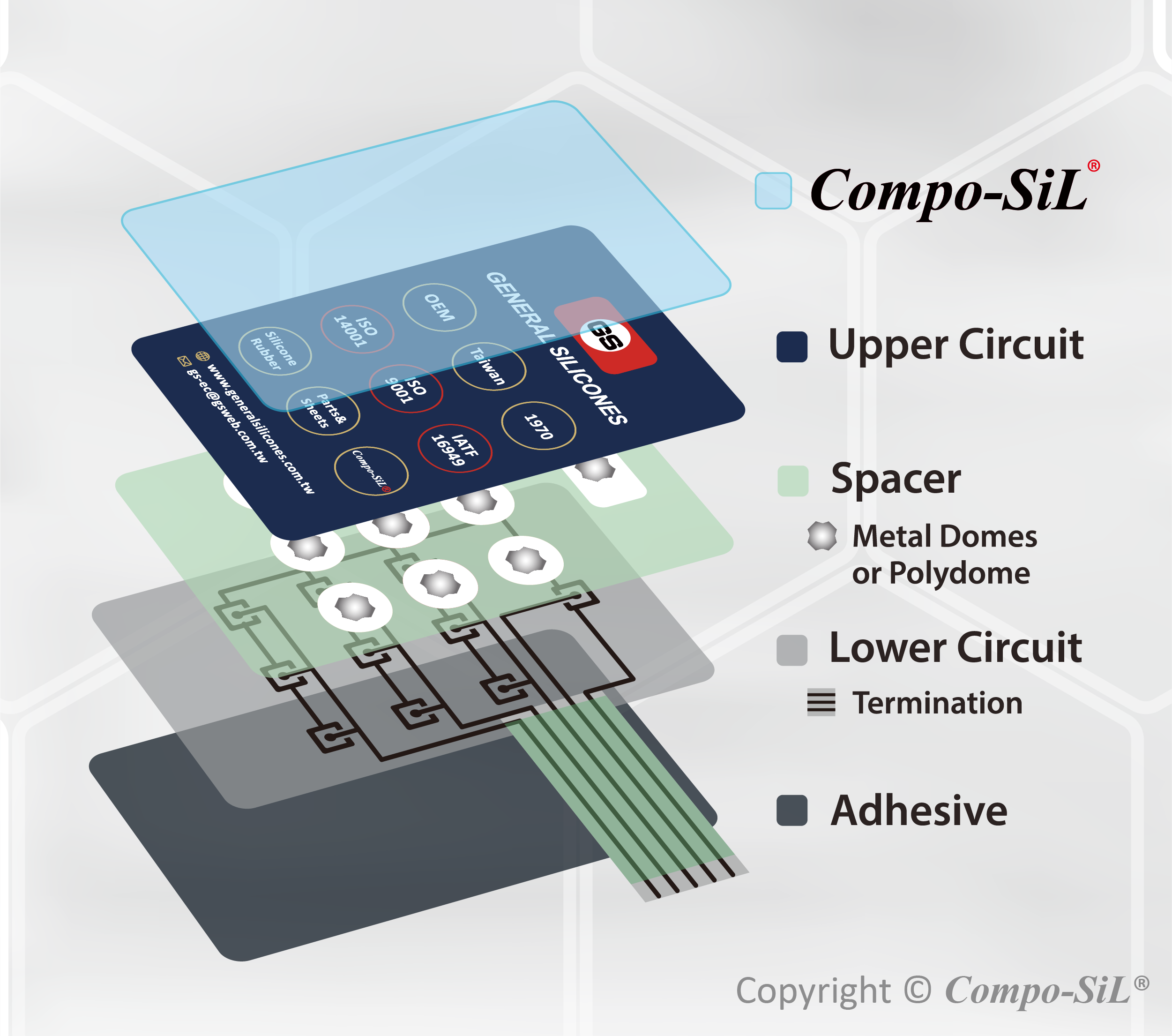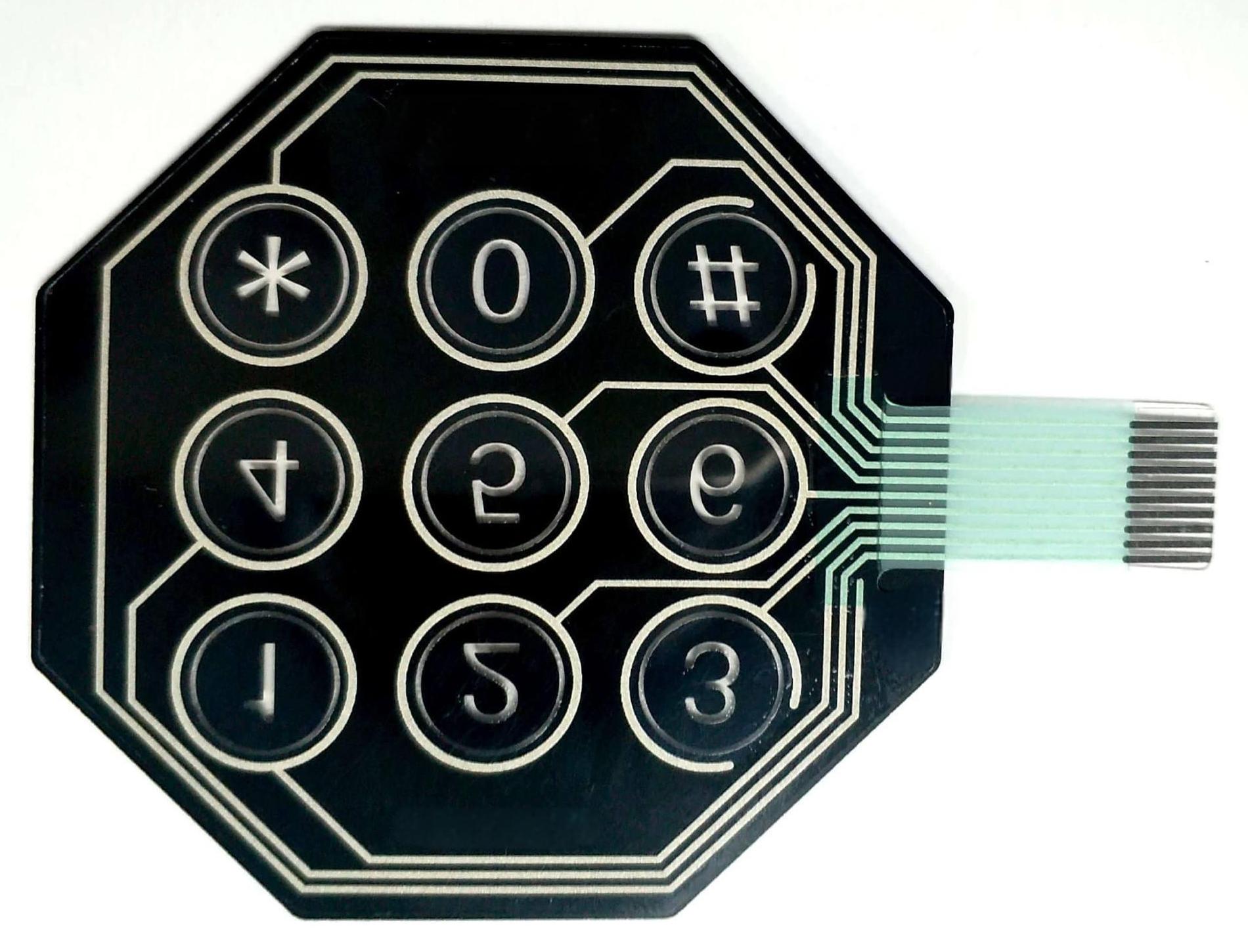The Manufacturing Refine Behind Membrane Change: What You Need to Know
The production process behind membrane layer switches combines cautious design, material option, and high quality control. It starts with comprehending the intricacies of membrane button design and proceeds through different phases, including product choices and printing methods. Each stage plays a necessary role in making sure capability and sturdiness. Nonetheless, the complexities of layer building and the strenuous testing requirements may disclose insights that are not quickly obvious. What exists beyond these foundational components?
Recognizing Membrane Switch Design
Membrane layer buttons might show up straightforward at first glance, their design involves elaborate considerations that ensure performance and toughness. The layout procedure starts with a thorough understanding of user requirements, including the user interface's desired application and ecological variables. Comfort designs is a crucial element, as the format has to promote convenience of use while making sure that tactile feedback meets customer expectations.Moreover, the layering of components, such as graphic overlays, glue layers, and conductive traces, have to be specifically crafted. membrane switch. This layered configuration not only affects the switch's responsiveness but also influences its long life. Interest is offered to the sealing strategies utilized to safeguard against dampness and dust, which could endanger efficiency. Additionally, layout factors to consider prolong to aesthetic appeals, where color design and visual clarity boost individual experience. Ultimately, the layout of membrane switches over balances functionality, customer experience, and sturdiness, ensuring that they fulfill the demands of numerous applications successfully
Materials Utilized in Membrane Change Manufacturing
When choosing products for membrane button manufacturing, it is important to consider both efficiency and toughness. The primary products consist of polyester and polycarbonate films, which give flexibility and toughness. These films are typically covered with sticky to assure appropriate bonding to substratums. Conductive inks, generally made up of silver or carbon, are crucial for producing electric connections within the button, permitting for trusted operation.Additionally, a protective layer, such as a tough layer, is regularly put on improve scrape resistance and durability. The selection of backing material, such as acrylic or foam, can considerably impact the button's tactile feeling and general individual experience. Moreover, various ecological elements, consisting of temperature level and humidity, need to direct product choice to ensure peak performance in particular applications. Ultimately, the right combination of materials adds to the membrane button's performance and lifespan, making notified choices crucial for suppliers.
The Printing Refine: Creating Graphics and Text
The printing procedure in membrane layer button manufacturing plays a considerable function in generating top notch graphics and text. Different visuals design strategies are employed to assure aesthetic appeal and capability, while cautious ink choice techniques are necessary for durability and performance. Comprehending these elements is basic for accomplishing finest cause membrane layer switch layout.
Graphic Style Techniques
Graphic style strategies play a necessary role in the printing process of membrane buttons, as they define how graphics and text will eventually appear on the end product. Effective visuals layout involves the critical use font styles, layouts, and shades to boost readability and visual charm. Developers usually make use of vector graphics for scalability, making certain that photos continue to be sharp at numerous sizes. Additionally, focus to comparison and positioning is essential, as it influences customer communication and aesthetic quality. The consolidation of branding aspects, such as logos, must be handled with care to preserve brand integrity. In general, thoughtful graphic style strategies contribute significantly to the performance and good looks of membrane buttons, impacting customer experience and product efficiency.
Ink Option Approaches
Choosing the proper ink is necessary for attaining the wanted aesthetic quality and sturdiness in membrane layer button manufacturing. Numerous ink kinds are made use of, consisting of solvent-based, water-based, and UV-curable inks. Each type supplies distinctive features, such as adhesion, versatility, and resistance to environmental elements. Solvent-based inks are often favored for their toughness and vibrant shades, while water-based inks are a lot more eco-friendly but may have restrictions in adhesion. UV-curable inks provide fast treating and durable performance. In addition, color matching techniques assure that the chosen inks align with design specs. Eventually, the option of ink have to take into consideration factors such as application approach, substratum compatibility, and end-use needs to achieve superior lead to membrane layer switch graphics and message.
Layer Building and Setting Up

Product Option Refine
A careful go right here choice of products is vital in the manufacturing procedure of membrane layer switches, as it directly influences functionality and longevity. The primary materials made use of consist of polyester, polycarbonate, and various conductive inks. Polyester is often preferred for its superb resistance to chemicals and abrasion, making it appropriate for rough settings. Polycarbonate, on the other hand, offers superior clearness and impact resistance, which is helpful for applications calling for visibility and effectiveness. Conductive inks, commonly made up of silver or carbon, are important for producing dependable electric pathways. In addition, the option of adhesive products affects the total integrity of the button - membrane switch. Assessing factors such as environmental direct exposure, responsive feedback, and visual demands overviews makers in choosing the ideal materials for their particular applications
Layer Attachment Techniques
Adhering layers in membrane switch building is an important procedure that ensures performance and longevity. Various adhesion methods are used to protect excellent bonding between layers, which typically consist of using adhesives, warmth, and pressure. Pressure-sensitive adhesives (PSAs) are frequently made use of for their convenience of application and prompt bonding capacities. Additionally, thermal bonding strategies can be applied, where heat is utilized to activate glue buildings, securing a solid bond. The selection of bond technique greatly relies on the products included and the certain application requirements of the membrane layer switch. Correct alignment and consistent application of adhesives are important to protect against problems, protecting the switch operates effectively throughout its intended lifespan.
Top Quality Control Procedures
Assuring high quality control throughout the layer building and construction and setting up of membrane layer buttons is essential for keeping performance and integrity. This process commonly includes a number of vital measures, including comprehensive assessments at each stage of manufacturing. Manufacturers utilize innovative screening techniques, such as peel tests and adhesion assessments, to confirm the stability of layer bonds. Additionally, visual assessments are carried out to determine any type of defects in printing or product disparities. Environmental conditions, such as temperature level and humidity, are carefully monitored to assure optimal healing and attachment. Normal calibration of equipment helps keep accurate production requirements. By executing these quality assurance procedures, makers can significantly lower the threat of product failure, guaranteeing that the last membrane switches fulfill the needed requirements and customer assumptions.
Examining and Quality Assurance Steps

Technologies in Membrane Switch Modern Technology
As advancements in modern technology remain to advance, membrane layer switches are gaining from innovative developments that boost their capability and user experience. One noteworthy advancement is the assimilation of capacitive touch innovation, which permits for more receptive and intuitive interface. This change not only improves aesthetics yet likewise reduces mechanical wear and tear, extending the life-span of the switches.Additionally, innovations in graphic overlay products have actually resulted in improved sturdiness and resistance to environmental aspects such as moisture and UV light. These products now use boosted clarity and brightness, additional boosting the visual appeal.Furthermore, the unification of wise innovation is transforming membrane switches into interactive control panels, enabling connectivity with IoT tools. This connection fosters a seamless user experience, leading the way for applications in numerous sectors, from healthcare to customer electronic devices. Collectively, these technologies position membrane layer changes as important parts in contemporary tool style.
Frequently Asked Concerns
How much time Does the Membrane Layer Switch Over Manufacturing Refine Take?
The period of the membrane button production process can differ considerably. Elements such as complexity, products utilized, and manufacturing quantity influence timelines, with typical production varying from a couple of days to a number of weeks for conclusion.
What Are the Common Applications for Membrane Layer Switches?
Membrane layer buttons are generally utilized in different sectors, including auto controls, house home appliances, clinical gadgets, and customer electronic devices (membrane switch). Their adaptability and sturdiness make them ideal for applications calling for straightforward user interfaces and trusted performance in diverse settings
Can Membrane Switches Over Be Customized for Certain Requirements?

What Is the Life-span of a Normal Membrane Switch?
The lifespan of a regular membrane switch varies, however normally, it varies from 1 to 5 million cycles. Elements such as usage, atmosphere, and material high quality considerably affect longevity and overall performance with time.

Are Membrane Layer Switches Over Eco Pleasant?
The environmental friendliness of membrane layer changes differs. Some products made use of may not be recyclable, while others can be environment-friendly. The overall effect depends upon producing techniques and materials, requiring mindful consideration throughout choice and disposal. The manufacturing process behind membrane switches over combines careful layout, material selection, and quality control. It begins with recognizing the intricacies of membrane layer button layout and proceeds with various phases, including material choices and printing techniques. When picking products for membrane button production, it is essential to contemplate both efficiency and resilience. A careful option of materials is essential in the manufacturing process of membrane layer switches, as it straight affects capability and resilience. The choice of bond method largely depends on the materials involved and the certain application demands of the membrane layer button.